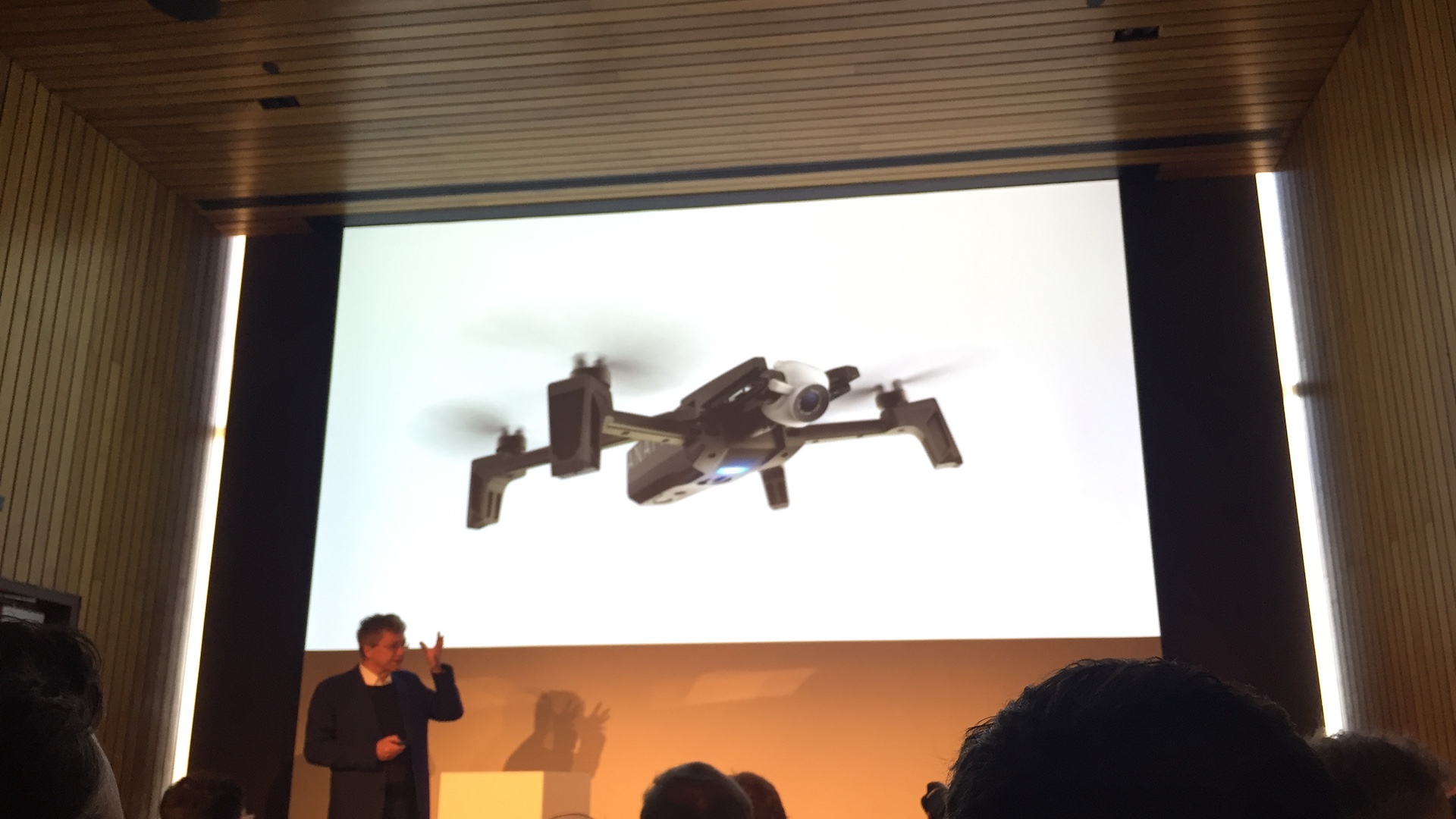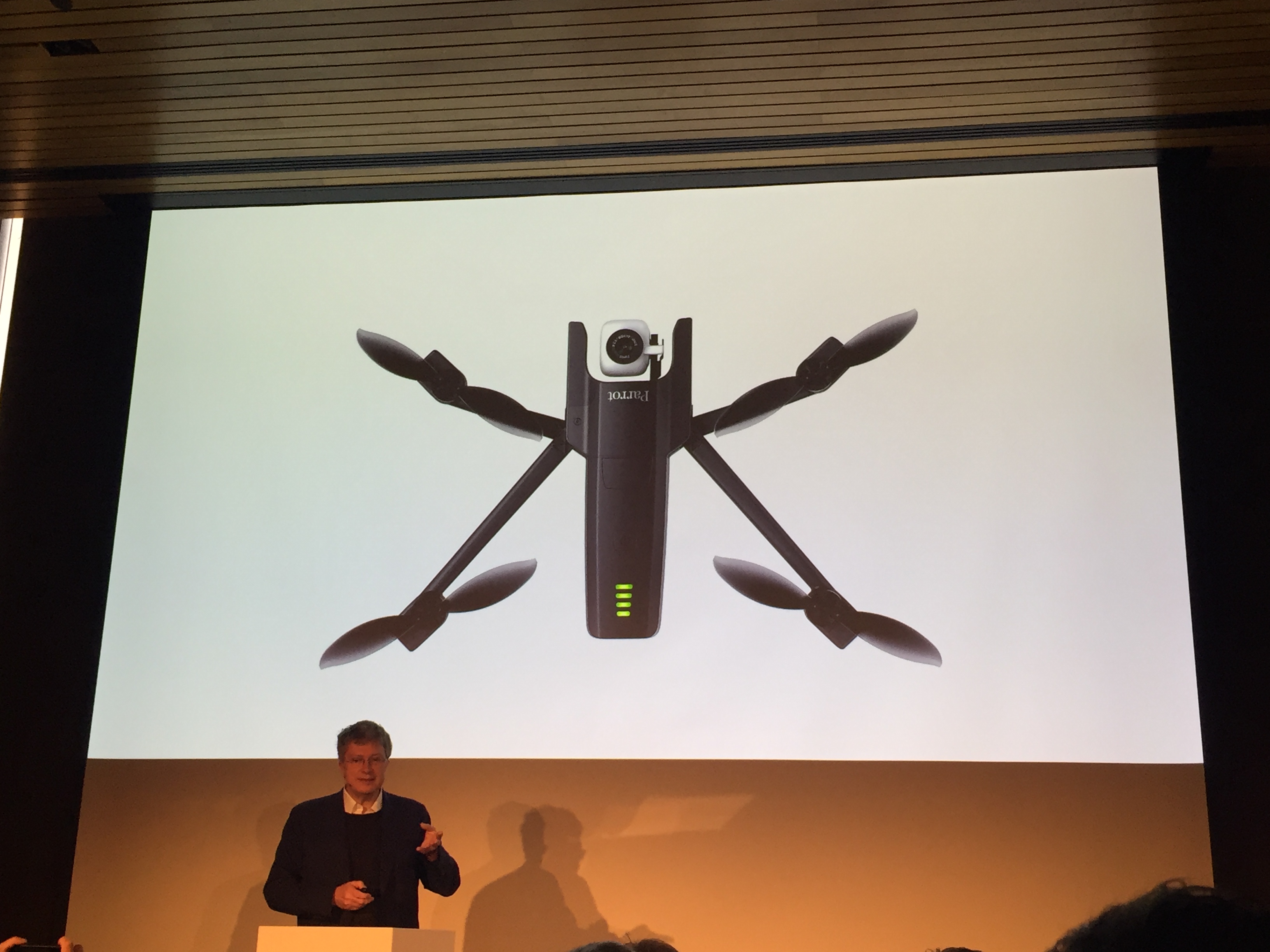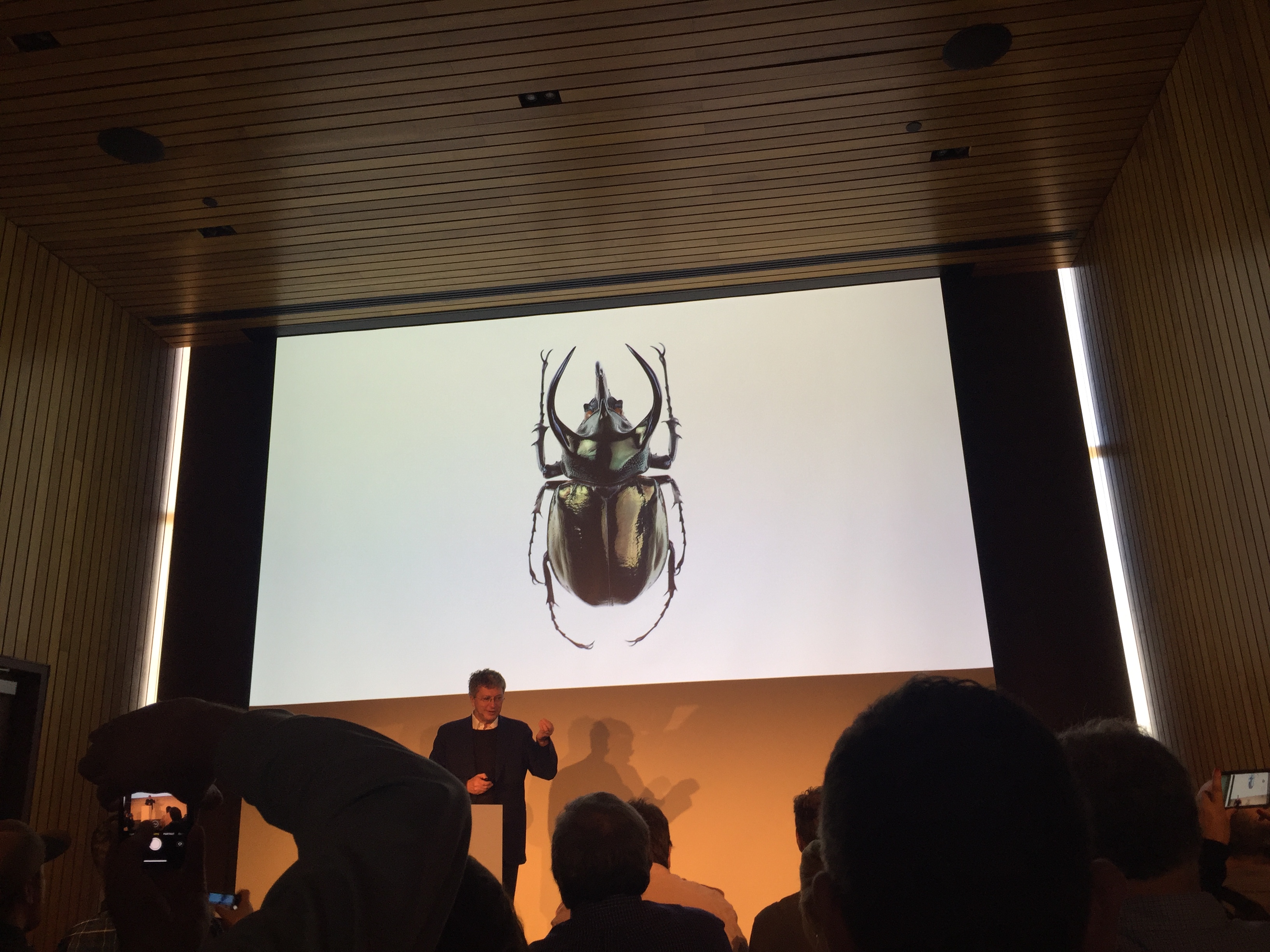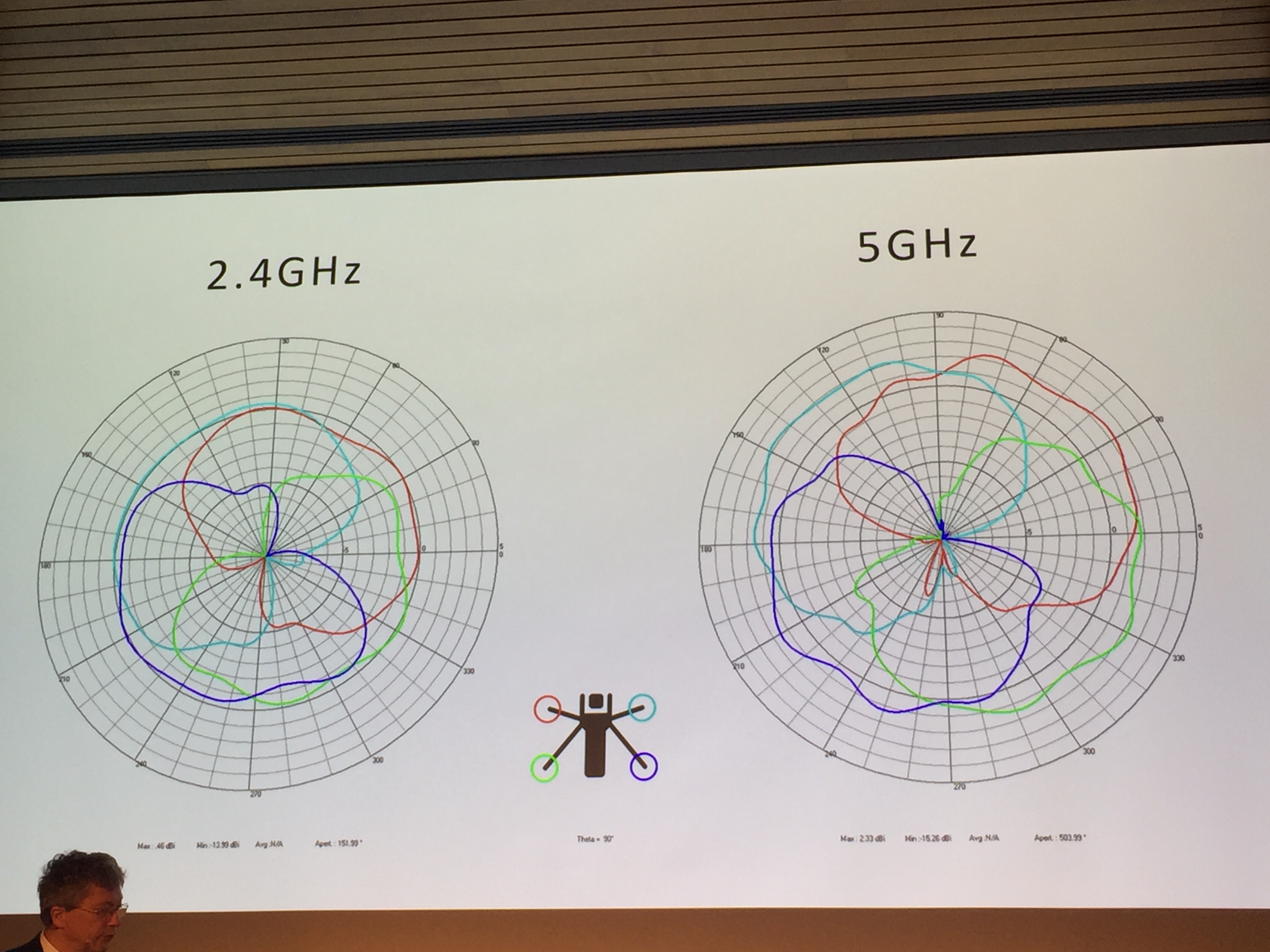

We were lucky enough to sneak into Parrot’s presentation at The Standard Hotel in New York City Wednesday, where the Paris-based drone company revealed the new Anafi: A foldable, lightweight, 4K-capable, bio-inspired drone that launches off your hand and is much quieter than its competition.
When Parrot CEO Henri Seydoux took the stage, we didn’t know much besides the drone’s name, and that free coffee is always welcome. As the presentation unfolded, we quickly learned that the Anafi unfolds, too, as does the new Skycontroller 3 that comes along with it.
Adding to the convenience of a medium-sized UAV that you can easily toss into your backpack is the weight itself. At 320 grams (11.28 ounces), the Anafi is easy to carry but doesn’t sacrifice any of its main features, namely, filming 4K footage, taking 21-Megapixel photographs, and providing you with 25 minutes of flight time. “Real 25 minutes,” Seydoux made sure to remark.

The Anafi’s bio-inspired nature basically extends toward its three-axis gimbal, the Wi-Fi/antennae design, and the ability to fold in on itself.
“It’s very, very foldable,” Seydoux said, “and capable to film in any direction.” The Parrot CEO was referring to the gimbal, with that latter remark, as two of the axes are mechanical, and one is digital, which not only allows the Anafi to film upwards, for example, but maintain shot composition and focus regardless of movement.
Seydoux then compared the horizontal and vertical movement capabilities of the human head, in addition to the “digital” gimbal of our eyes, to those same attributes of the Anafi. Turns out, insects weren’t the only inspiration here.

When it comes to the Wi-Fi connection between the Skycontroller 3 and the drone itself, Parrot infused the Anafi with four antennas, one in each foot, with two of those automatically switching to the Skycontroller when necessary. Additionally, the drone’s rotation won’t substantially impact the Wi-Fi connection, as Parrot used 2.4GHz, 5GHz, and 10MHz bandwidths.

In terms of actually flying this thing, the Anafi launches off your hand like the DJI Spark, is capable of resisting winds of up to 50 kilometers per hour and reach speeds of up to 55 kilometers per hour.
Regarding the drone’s noise pollution, Seydoux was adamant that drones need to become less threatening to the public and passersby in order to enter the mainstream consciousness in a positive way.
“Noise reduction makes it more socially acceptable,” he said. “Social acceptance of the drone means it should be safe.” And when it comes to safety, Parrot makes sure the device returns back to you as soon it reaches low levels.

Smart Return Home isn’t the only flight mode, however, as the familiar Orbit Mode and Follow Me mode make a reappearance here, in addition to some pretty interesting newcomers. 3D Mapping, for example, creates 3D maps of areas or buildings (which look similar to Apple Maps’ satellite imagery, by the way), thanks to sister company Pix4D’s software. The new software developer kit, additionally, will let you design your own custom flight modes, which is pretty damn cool.
Flight Plan lets you coordinate and orchestrate your own specified flight path, using the Parrot smartphone app and its corresponding map.
Additionally, the Dolly Zoom mode will let you create some visually impressive and disorienting shots. Seydoux couldn’t restrain himself from using Alfred Hitchcock’s Vertigo as a reference. You know the effect: the center of the frame seems to draw nearer, as the background pushes further and further into the distance. It’s an easy filmmaking trick to pull off, but impressive to have it added as a pre-programmed mode in a UAV for the first time.
Now, as for the all-important video specs you’re surely clamoring for, the Anafi seems to check all requisite boxes. Not only does it shoot 4K footage like the DJI Mavic Air 4K, but it does so using high-dynamic range, and is capable of encoding that footage at 100 megabytes per second (thanks to the Ambarella video processor), and stores it on the included and embedded 16-gigabyte SD card. Slow-motion footage is shot at 1080p, which is frankly enough for most users who aren’t professional filmmakers who desperately need a drone for an aerial 4K slow-motion shot.
The Sony IMX230 Sensor allows for 21-Megapixel photographs, RAW files, and 2x optical zoom. Seydoux claimed the Anafi can endure harsh weather conditions and is robust when it comes to the cold or heat, with the lens remaining optically stable. The globe-trotting advertisement played for us certainly proved that the drone functions perfectly in the Alps as it does at your standard backyard cookout.
Ultimately, the Anafi is a sleek, capable new contender on the hobby/semi-professional drone user market. While the $699 price is certainly steep, that does fall in line with some of its peers, and the Anafi does provide you with some pretty well-developed engineering and accompanying software. In case you’re looking for a drone that can do more than a cheap entry-level UAV, you might want to consider this one in addition to its competition. Parrot has been upping its game impressively in the past few years, with this recent announcement being the most impressive.
Pre-orders have already begun, so choose whether to make an impulse buy or wait for our upcoming hands-on review to make a more informed decision.